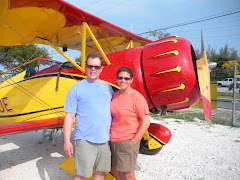Entrepreneurship Case
Cirque Du Soleil: The Fire Within
1. Based on what you have read in the case, outline a rudimentary SWOT analysis for Cirque du Soleil.
The strengths include a large pool of talent to pull from. Along with that, they have talent scouts on the look out. The show is virtually completely under one tent. That is they don’t rely on others to produce costumes and such. The company has to sides that run the show, a creative and a business side which appears to be a formula for a long and profitable running show.
The weaknesses could be the success doesn’t fit a traditional business models and if a bank were to have a look internally into the company for a loan, it may not match similar companies in terms of assets.If the business side of the show would run the creative side, there would be a possiblitiy of failure.
The opportunities of the company include a proven track record of success. Markets for the shows have expanded.
Threats of the show can only be speculated. A lack of patronage to Las Vegas could potentially lead to problems or cable tv suscribers flocking to internet tv.
2. Explain how Cirque du Soleil implements, evaluates, and controls the elements of the marketing plan.
The company attempts to communicate with the audience by performing and that is a part of marketing. For example in doing some flips, the goal isn’t to do the best flip, rather connect with the ticket holder. The names of the shows are a bit exotic, creating a bit of a stir to fans. The shows are live and also featured on television. Now how is this marketing evaluated and controlled? This is not exactly stated from the text, ch.2. Creativity is a part of it, and it has been profitable and the casinos have a role in the show. Thus, the formal controls over marketing and the show are a bit of a mystery.
3. List and describe at least three keys to Cirque du Soleil’s competitive advantage.
First way is using the art of creativity. Second, a division between the performing and business side leads to an advantage. Thirdly, a big part of the show is done in house, with out having to rely on outside influences.
skip to main |
skip to sidebar

Be like Howard Huges, Fly Waco!
I'm James and I will be your tour guide through marketing for the 21st Century. This blog is in association with St. Scholastica's Marketing 6450 at the graduate level.
Wind in your face marketing-here
Be like Howard Huges, Fly Waco!
Followers
Blog Archive
-
▼
2009
(25)
-
▼
March
(18)
- Perceptual Mapping and VALS Survey
- Chapter Nine Review & Application
- Viva Las Vegas
- Chapter Seven Review & Application
- Chapter Six Questions and Answers
- Chapter Five Questions and Answers
- top 5 observation wk 4
- Cirque du Soleil
- World Products?
- Opportunity?
- Marketing Miscue Chapter Four- Crazy for You
- Chapter four Review &Application
- Chapter 3 Review & Applications
- Chapter 2 Cirque du Soleil Question 1, 2, 3
- Chapter 2 Review & Application 2.1, 4.1
- chap 1 Review & Application 1.1, 2.1, 3.3
- Week One “Value Innovation”
- For the love of the German Van
-
▼
March
(18)